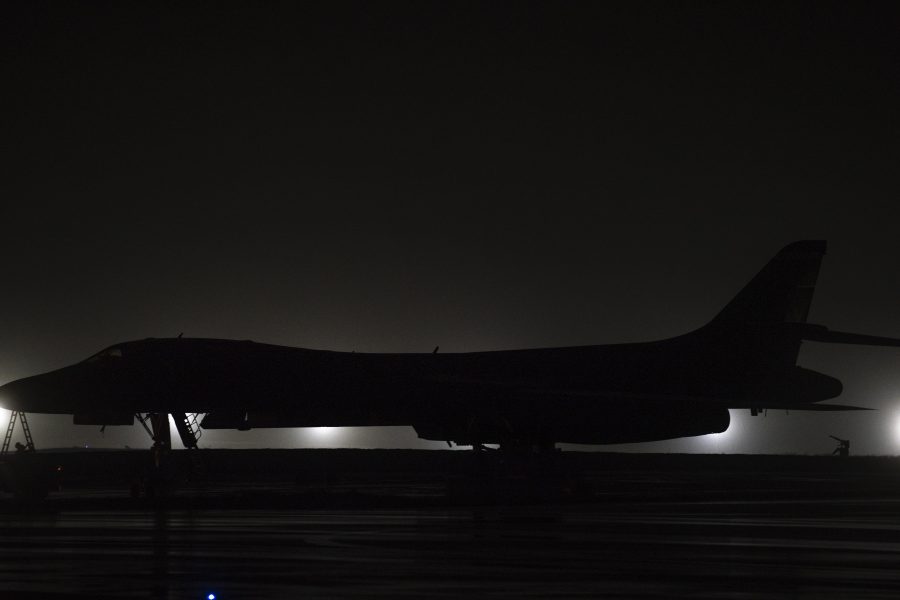Four B-1B Lancers and about 200 airmen deployed to Andersen Air Force Base, Guam, on May 1 as a short “bomber task force” rotation, just two weeks after the service ended its 16-year Continuous Bomber Presence mission in the Pacific.
The B-1s, from the 9th Bomb Squadron at Dyess Air Force Base, Texas, will train with other USAF and allied units, and conduct “strategic deterrence missions to reinforce the rules-based international order” in the region. Three bombers flew directly to the Guam base, while one split off to fly to Japan to train with U.S. Navy assets in the region before going to Andersen, according to a Pacific Air Forces release.
The deployment is one of the first bomber task forces to head to the Pacific as part of the Air Force’s shift toward “dynamic force employment.” USAF did disclose how long the B-1s will remain in theater, though task force deployments are far shorter than full CBP rotations, which typically lasted several months.
It is the third time within nine days that B-1s have flown in the theater, after two B-1s from the 37th Bomb Squadron at Ellsworth Air Force Base, South Dakota, flew directly to train near Japan on April 22 and two B-1Bs also from Ellsworth flew directly to the South China Sea.
“The B-1 provides all of the training opportunities which the B-52 provided, plus the ability to train to advanced stand-off, anti-surface warfare with [the AGM-185C Long Range Anti-Surface Missile],” Lt. Col. Frank Welton, PACAF’s chief of operations force management, said in the release.
Air Force Global Strike Command boss Gen. Timothy Ray said April 29 the B-1s bring a unique capability to the Pacific, with the ability to carry both the LRASM and AGM-158B Joint Air-to-Surface Standoff Missile-Extended Range. Additionally, since the B-1 can only carry conventional weapons, more countries are willing to have it land or fly within their borders, he said during an AFA Mitchell Institute virtual event.
“There’s a few people who get a little alarmed when you bring a nuclear bomber into their airspace,” Ray said. “We look at the B-1 as a great capability: I can land it in a lot of places physically that I can’t land a B-52, and I can operate with more people. So we’re going to feature that a little bit more in the Pacific.”

